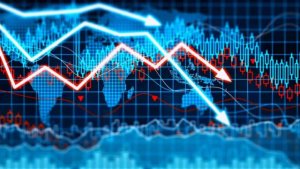Is the US Stock market heading towards a disaster?
September’s CPI figures came in worse than expected, taking the US stock market on a rollercoaster ride. NAGA’s market analyst, Michalis Efthymiou thinks about it

NAGA’s market analysts have been speaking about the level of inflation and its effect on the stock market since the very beginning of summer 2022. Another set of CPI and Core CPI figures have been made public and what they’ve shown us is that inflation is not showing signs of slowdown. The situation does not seem to be any better and interest rate hikes don’t really seem to be working. So what does this mean for the US equities market?
Well, when the CPI figures were published, US indices declined up to 4.7% within 75 minutes. This definitely consists of one of the sharpest declines of 2022. The large downward movement eventually triggered pending orders and investors looking to benefit from the discounted price. But why have investors reacted this way and will the market remain under pressure going forward?
The US Stock Market
The issue that the US equities market is now experiencing is the fact that consumers are being hit by two negative factors. First, inflation is super high which means that consumers are struggling to maintain the same level of economic activity. High inflation also makes it more difficult for investors to maintain a healthy risk profile. Second, the Federal Reserve has been increasing interest rates consecutively for several months now.
As a result, consumers are spending more on their mortgages and living expenses, while inflation continues to eat into their pockets. Interest rate hikes are not expected to subside this year, especially after the latest inflation figures. This means that the Federal Fund Rate will move into the “restrictive territory” next month. In simple terms, this equates to a super expensive debt scenario.
Overall, this puts the US economy at a high risk of seeing at least a minor recession. This sentiment was echoed by CitiBank which predicted that the US is heading for a recession in 2023. They also added that the recession is likely to increase the unemployment rate to 5.5%.
Naturally, the above-mentioned factors can create a lot of pressure for investors and the markets in general. This is something we have been seeing for months now, but the true question is; what is the real intrinsic value of the markets? Of course, this is one of the most difficult questions to answer, but investors continue to evaluate the price and fundamentals to make trading decisions.
Understanding the Inflation-Based Indices
The US inflation figures are split up into 3 indices – the PPI, CPI and Core CPI. The most influential of the three is the CPI, also known as Consumer Price Index. The CPI measures the price alteration of a group of products and services on a monthly basis. This index is the most influential as it’s designed to represent the economy as a whole. For September the CPI figure was predicted to be 0.2%, but actually increased by 0.4% which is the highest in 3 months.
The Core CPI is also an index that measures the price alteration over a monthly period, but excludes food and energy costs. This can help investors determine where inflation is highest within the economy. September’s Core CPI figure was also higher than expected for a second consecutive month, coming in at 0.6%. Lastly, the PPI (Purchase Price Index) is an index that illustrates how prices of goods and services have changed at production level.
What’s Next for the Economy and the Markets?
It is vital for investors to monitor inflation levels over the next few months. All attention will now turn towards the Federal Reserve, to see how they will respond to the latest CPI figures. Will the regulator opt to increase interest rates by a whopping 1% or will they not risk the backlash?
This question will be the main price driver within the market in the near future. In order to determine the Fed’s stance, investors will be monitoring speeches by not only the Chairman of the Fed, Mr. Powells, but also other members of the FOMC (Federal Open Market Committee).
Visit our market analysis page on our blog to keep up to date with the latest developments.
IMPORTANT NOTICE: “Any news, opinions, research, analyses, prices or other information contained in this article are provided as general market commentary and do not constitute investment advice. The market commentary has not been prepared in accordance with legal requirements designed to promote the independence of investment research, and therefore, it is not subject to any prohibition on dealing ahead of dissemination. Past performance is not an indication of possible future performance. Any action you take upon the information in this article is strictly at your own risk, and we will not be liable for any losses and damages in connection with the use of this article.”
RISK WARNING: “Derivatives are complex instruments and come with a high risk of losing money rapidly due to leverage. A high percentage of retail client investors lose money when trading Derivatives with this provider. You should consider whether you understand how Derivatives work and whether you can afford to take the high risk of losing your money.









